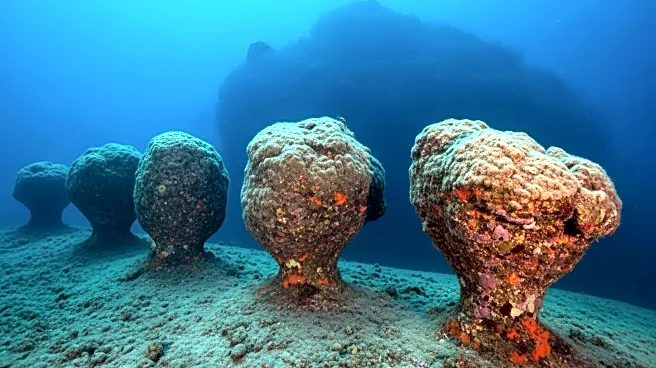What's Happening?
A recent study published in Nature has challenged the prevailing theories about the Snowball Earth hypothesis, which posits that Earth was once entirely covered in ice. Researchers, led by Nir Galili from the Geological Institute of Zurich and the Weizmann Institute, analyzed ooids—tiny laminated spheroids formed on the seafloor—to measure the concentration of organic carbon dissolved in ancient oceans. Their findings indicate that the ocean's dissolved organic carbon reservoir was significantly smaller than previously thought, about 90 to 99 percent smaller than today. This discovery contradicts earlier hypotheses that suggested much higher concentrations of organic carbon during the glaciation periods.
Why It's Important?
The study's findings have significant implications for understanding Earth's historical climate and the conditions that led to global glaciation events. By revealing a smaller organic carbon reservoir, the research suggests that Earth's carbon engine was idling when the planet froze, calling for new explanations of how glaciations and oxygenation are linked. This could reshape scientific perspectives on Earth's climate history and influence future research on global climate patterns. The study also highlights the importance of empirical data in challenging established scientific theories.
What's Next?
The results of this study may prompt scientists to develop new models and theories to explain the link between glaciations and oxygenation. Researchers might explore alternative mechanisms that could have contributed to the Snowball Earth events, considering the smaller organic carbon reservoir. This could lead to a broader understanding of Earth's climate dynamics and the factors influencing global temperature shifts over geological time scales.
Beyond the Headlines
The study underscores the importance of using empirical data to challenge and refine scientific theories. By analyzing ooids from various global sites, researchers ensured that their findings were representative of planet-wide conditions rather than localized snapshots. This approach could inspire similar methodologies in other areas of climate research, emphasizing the need for comprehensive data collection and analysis.










